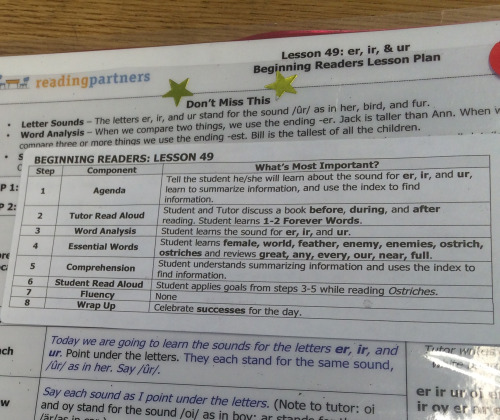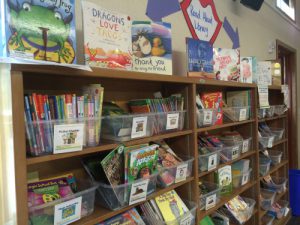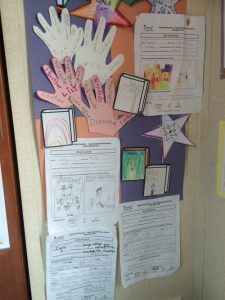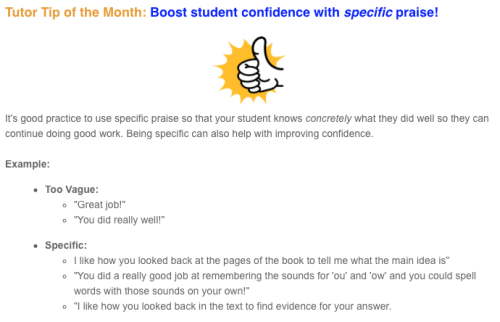Originally published by thelittlestacks.com
By: Kristine Techavanich
From October to May, Thursdays usually meant that it was my day to spend a few hours volunteering. When I moved to Seattle in August 2015, I knew that I would miss working with kids and sought an organization that supported literacy. Thanks toVolunteerMatch, a wonderful resource that offers a great number of opportunities, I was able to find Reading Partners.
What is Reading Partners?
In their policy platform, Reading Partners describes themselves as “a national education nonprofit dedicated to improving students’ reading students. We recruit and train community volunteers to work one-on-one with students in low-income elementary schools to tutor students from low-income communities who are reading below grade-level. Reading Partners is an example of an evidence-based, public-private partnership that can bring substantial resources to schools.”
What does each session with Reading Partners look like?
I attended orientation at the start of the 2015-2016 school year and was pleasantly surprised to learn that every 45 minute session with the student was incredibly well-structured!
Here is an example of one lesson’s agenda that I used while working with a 1st grade Beginning Reader student:

Volunteers were asked to come in 10-15 minutes before each session to review the lesson for the day. The lessons are summarized on the front of each lesson packet. Students progressed through 3 levels according to their assessed ability to read from emerging reader to beginning reader to comprehension reader.
Encouraging a love of reading
I loved that each session began with a 10 minute tutor read aloud in which students chose from a library of books that are categorized by grade level and subjects such as biographies, sports, animals, and science. The collection grew as the school year continued.
 I so enjoyed getting to know the reading preferences of the students that I tutored. One student, a 1st grader, seemed to always choose Magic Treehouse chapter books because he liked that there were “always things happening” and he didn’t seem to be too thrilled about having silly books read to him such as B.J. Novak’s Book with No Pictures. A 3rd grader, on the other hand, was so entertained by the book that he asked me to read it to him over and over again with great zeal! Another 1st grader seemed to be absorbed by any kind of book at all and especially loved informational text with lots of colorful pictures of animals and bugs.
I so enjoyed getting to know the reading preferences of the students that I tutored. One student, a 1st grader, seemed to always choose Magic Treehouse chapter books because he liked that there were “always things happening” and he didn’t seem to be too thrilled about having silly books read to him such as B.J. Novak’s Book with No Pictures. A 3rd grader, on the other hand, was so entertained by the book that he asked me to read it to him over and over again with great zeal! Another 1st grader seemed to be absorbed by any kind of book at all and especially loved informational text with lots of colorful pictures of animals and bugs.
I was able to supplement the choices by bringing in books that I handpicked for the students that I worked with and used this as an opportunity to hone my reader’s advisory skills. I brought in a variety of books such as Choose Your Own Adventure Books for a child who loved playing video games and my signed copy of an Adventure Time graphic novel for a child who loved the show but did not know there was a print version. The toughest part of bringing in books was not allowing the children to keep it when they begged to take them home since it’s against the rules to give gifts. (Let’s hope that they take my advice and go to a library to check them out during the summer!)
These tutor read aloud portions were important in building the relationship with the student and the tutor. Students seemed to be thrilled that an adult was not only reading to them but were genuinely interested in hearing about how they felt about certain parts of the book. The kids were so eager to tell me all the things they already knew about the subject of the book and I relished in the moments where they felt that they could shine.
 Another way that Reading Partners helps children gain a love of reading is by rewarding children with books to take home. Students are able to take a book home with them if they bring back a book report. After a certain number of book reports, the student could get a toy prize. (This incentive proved to be very effective for one of my students who brought back over 20 book reports!)
Another way that Reading Partners helps children gain a love of reading is by rewarding children with books to take home. Students are able to take a book home with them if they bring back a book report. After a certain number of book reports, the student could get a toy prize. (This incentive proved to be very effective for one of my students who brought back over 20 book reports!)
Teaching literacy skills
During the read aloud portion, the student and I would try to find a word that’s new to add to their word journal. This activity helped teach student strategies that they could use when they encounter words that are unfamiliar to them. We’d use tools for learning new words such as finding it in the dictionary, drawing a picture, or writing a sentence. Vocabulary words were reviewed at each session to help the student’s vocabulary grow. It was surprising to learn that some 1st grade students had never used a dictionary before. I found that these students were excited about learning how to use one and enjoyed looking for word definitions.
For students who hadn’t mastered the alphabet yet, simple games were used to reinforce letter sounds. Even though these games were simple, they were always well received by the students. (Hooray for gamification! I am such a fan of play.) A binder ring was used to coach the student on letters that the student has mastered and an unfamiliar letter was added each lesson.
As the students progressed in the program, they were asked to do more writing and spelling on their own and to look for meaning in the text.
Comprehension was taught in a variety of ways such as:
- introducing parts of the book (e.g. table of contents, diagrams, digraphs, glossary)
- instructing students about summarizing
- asking questions that required students to think about what they just read
- discussing the characters, setting, sequence of events, and plot
- previewing informational text and setting a goal (i.e. what the child wants to learn from the book) before reading
Volunteering for professional development
Reading Partners offered many valuable resources for volunteers to become better educators. As I think librarians are also educators, I hope that what I’ve learned as a tutor will help me become a better librarian.
Monthly newsletters offered tips to implement during tutoring sessions and monthly workshops were provided to teach interested volunteers about being more effective tutors.
 One workshop that I attended was about making the most out of the student read aloud and focused on asking the right kinds of questions.
One workshop that I attended was about making the most out of the student read aloud and focused on asking the right kinds of questions.
As an aspiring youth services librarian, I gained so much from volunteering with Reading Partners. The research-based approach, well developed lesson plans, and partnership with an underserved elementary school gave me insight to how schools teach our young people how to read. Working one-on-one with children was extremely beneficial for understanding the kinds of difficulties that students and their caregivers may face when it comes to learning to read. Listening to a child read aloud and coaching them through tough words allowed me to gain skills as a mentor. Since I worked with different students, I also learned about different learning styles and how to be accommodating and flexible.
Many, if not all, of the volunteers have a love of reading that they wish to inspire in the children that they tutor. It was inspiring for me to see people in the community come together for the same goal of helping a struggling child learn how to read. Honestly, I felt apprehensive before the sessions because I worried about not being an effective tutor but I always felt good about volunteering whatever the outcome. The program itself was supportive to developing skills in their volunteers too.




